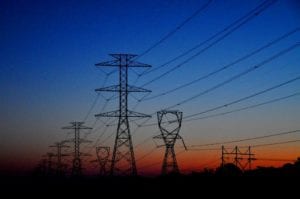The Gauteng Provincial Government is set to release R1.2 billion towards resolving the energy crisis in the province.
“In a few weeks, we will appoint six developers who will commence the construction of an 800 megawatts solar farm in Merafong. This will be followed by the installation of roof top solar panels in government buildings especially hospitals, clinics and schools,” Gauteng Premier Panyaza Lesufi said on Monday in Johannesburg. Delivering his State of the Province Address in the Gauteng Provincial Legislature, he said the electricity deficit is focused at 4058 mega volt-ampermps (MVA) in 2025. “…This is slightly high given Eskom’s inability to generate more from its current fleet. As Gauteng, we have been working on finding solutions to the energy crisis. We have established an energy crisis response team that engages with the National Energy Committee and working with local government and energy experts,” Lesufi said. Eskom has been battling to keep the lights on for the past few months, leading to increased stages of load shedding and a devastating impact on lives, livelihoods and businesses. “We will engage with Johannesburg Municipality’s City Power as well as Tshwane’s Rooiwal facility with an intention of supporting them to expand and generate more power. We will meet with owners of Kelvin Power Station to establish how we can partner with them to limit load shedding in Gauteng. From next week, we will advertise a call for proposals for alternative suppliers of energy that can contribute to a solution of the energy crisis and the reindustrialization of Gauteng,” he said. The Premier welcomed the declaration on a National State of Disaster, which was announced by President Cyril Ramaphosa during his State of the Nation Address (SONA) earlier this month. The President explained that the declaration will enable government to “provide practical measures” to assist businesses that have been devastated by the effects of load shedding. Where technically possible, it will also enable government to exempt critical infrastructure such as hospitals and water treatment plants from load shedding. It will enable government to accelerate energy projects and limit regulatory requirements while maintaining rigorous environmental protection as well as procurement principles and technical standards.Furthermore, a Minister of Energy in the Presidency is expected to be appointed to focus solely on bringing the country out of the current energy deficit.
Prior to the declaration, government had already been working on ending loadshedding as the President announced a plan to address the crisis in July 2022. The plan was developed through extensive consultation and endorsed by energy experts as providing the best and fastest path towards energy security. Since the plan was announced, there has been important progress in implementing the Energy Action Plan. Climate change Lesufi indicated that the province’s air quality continues to deteriorate. “The water quality and now quantity is on a decline. This places vulnerable sectors more at risk. As government, we are making efforts to mitigate against the factors, which contribute to climate change. Among other efforts in combating climate change, we are investing in green technology and planting trees,” he said. With the country experiencing natural disasters, the Premier assured citizens that the provincial government is ready to deal with them. “For the reasons above, we are establishing a combat ready Disaster Management Centre with state-of-the-art disaster management equipment. It will also house helicopters, drones, and highly skilled personnel that can respond within the shortest possible time. “Areas prone to disasters such as Jukskei River in Alexandra Township will receive additional support to relocate within the shortest possible time when the disaster centre is in full force,” he said.







